孙其峰,庚申正月生于山东招远。自幼酷爱书画,兼醉心诗文戏曲,师舅父王友石习画。
Sun Qifeng was born in the first month of the Gengshen year (1920) in Zhaoyuan, Shandong. From a young age, he loved calligraphy and painting, and was also passionate about poetry and traditional opera. He studied painting under his uncle, Wang Youshi.
甲申(1944年),入北平国立艺专国画科,师徐悲鸿、黄宾虹、李苦禅、秦仲文、王友石、汪慎生,兼得寿石工、罗复戡、金禹民教益。时研汉隶,习行草,学二王、孙过庭《书谱》,旁涉篆书、魏碑,取精用宏,锐意创新,成独特书风。七十年代后,书名崛起,世所瞩目。
In the Jiashen year (1944), he entered the National Art School in Beiping to study Chinese painting. He was taught by Xu Beihong, Huang Binhong, Li Kuchan, Qin Zhongwen, Wang Youshi, and Wang Shensheng, and also benefited from the teachings of Shou Shigong, Luo Fukan, and Jin Yumin. During this period, he studied Han Dynasty clerical script and practiced running script, learning from the styles of the "Two Wangs" and Sun Guoting's "Treatise on Calligraphy". He also dabbled in seal script and Wei stele inscriptions, refining his skills and striving for innovation, which led to the development of his unique style. After the 1970s, his reputation in calligraphy rose significantly and became widely recognized.
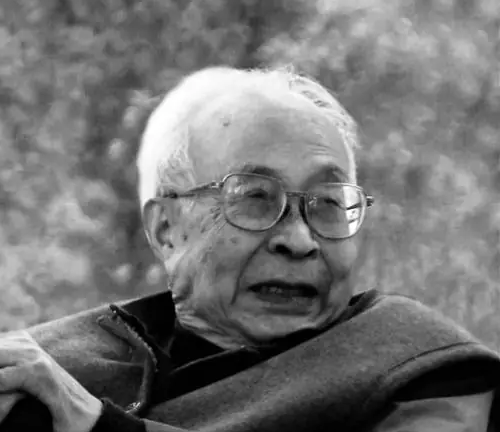
孙其峰修养全面,绘花卉翎毛山水,书法擅金文、小篆、隶书、草书、行书,尤以草隶见长。师古不泥,能创异。其行草脱胎二王、孙过庭,而不拘古法,自成一格。曾言:“作书需融众妙,有二王、孙过庭,及欧、柳、颜、赵、苏、黄、米、蔡,然必有己,不可‘忘我’,要‘有我’。”深谙继承与革新之道,行草既具二王典雅,又含孙过庭谨严,法度不失,新意盎然。其草书雄劲豪放,跌宕奔突,不以狂怪为能。
Sun Qifeng was well-versed in various arts, excelling in painting flowers, birds, and landscapes, and proficient in calligraphy styles such as oracle bone script, small seal script, clerical script, cursive script, and regular script. He was particularly skilled in cursive and clerical scripts. He adhered to ancient traditions without being confined by them, creating unique innovations. His running script was rooted in the styles of the "Two Wangs" and Sun Guoting but was not restricted by ancient methods, forming his own distinctive style. He once said, "Writing calligraphy requires integrating various essences—those of the Two Wangs, Sun Guoting, as well as Ou, Yu, Yan, Zhao, Su, Huang, Mi, and Cai. However, one must have oneself in it; one cannot 'lose oneself' but must 'have oneself'." He deeply understood the dialectical relationship between inheritance and innovation. His running script had the elegance of the Two Wangs and the meticulousness of Sun Guoting, maintaining ancient principles while exuding new vitality. His cursive script was vigorous and unrestrained, dynamic and powerful, without being bizarre or eccentric.
孙其峰隶书独具特色,遒劲洒脱,备受好评。清代隶书成就高,启功赞邓石如、伊秉绶、何绍基为巨擘,后人难脱俗。孙其峰隶书贵在“脱俗”,四十年代临《张迁》《史晨》《曹全》《华山》等碑刻,精工至极。八十年代后,字形横展,波势飞动,自成面貌,不足满足,融汉简笔法。简牍汉墨迹,近代出土,书风多样,笔法清晰,天真烂漫。孙其峰喜居延、武威、甘谷木简,细摹解析,深谙汉简书法,融简牍碑刻于一炉,古朴洒脱,极具魅力。
Sun Qifeng's clerical script was unique, vigorous, and free-spirited, garnering high praise. The Qing Dynasty achieved great heights in clerical script, with Qi Gong praising Deng Shiru, Yi Bingshou, and He Shaoji as giants, with later practitioners struggling to surpass them. Sun Qifeng's clerical script was valued for its "originality." In the 1940s, he meticulously studied the steles of Zhang Qian, Shi Chen, Cao Quan, and Huashan, achieving great precision. After the 1980s, his characters expanded horizontally, with dynamic wave-like strokes, forming a unique style. Yet he was not content and incorporated brush techniques from Han Dynasty bamboo slips. These slips, unearthed in modern times, displayed a variety of styles with clear, lively brushwork, resonating with spontaneity and charm. Sun particularly admired the wooden slips from Juyan, Wuwei, and Gangu, carefully studying and understanding Han simplified script, integrating its essence into his work, resulting in a rustic, elegant style with great appeal.

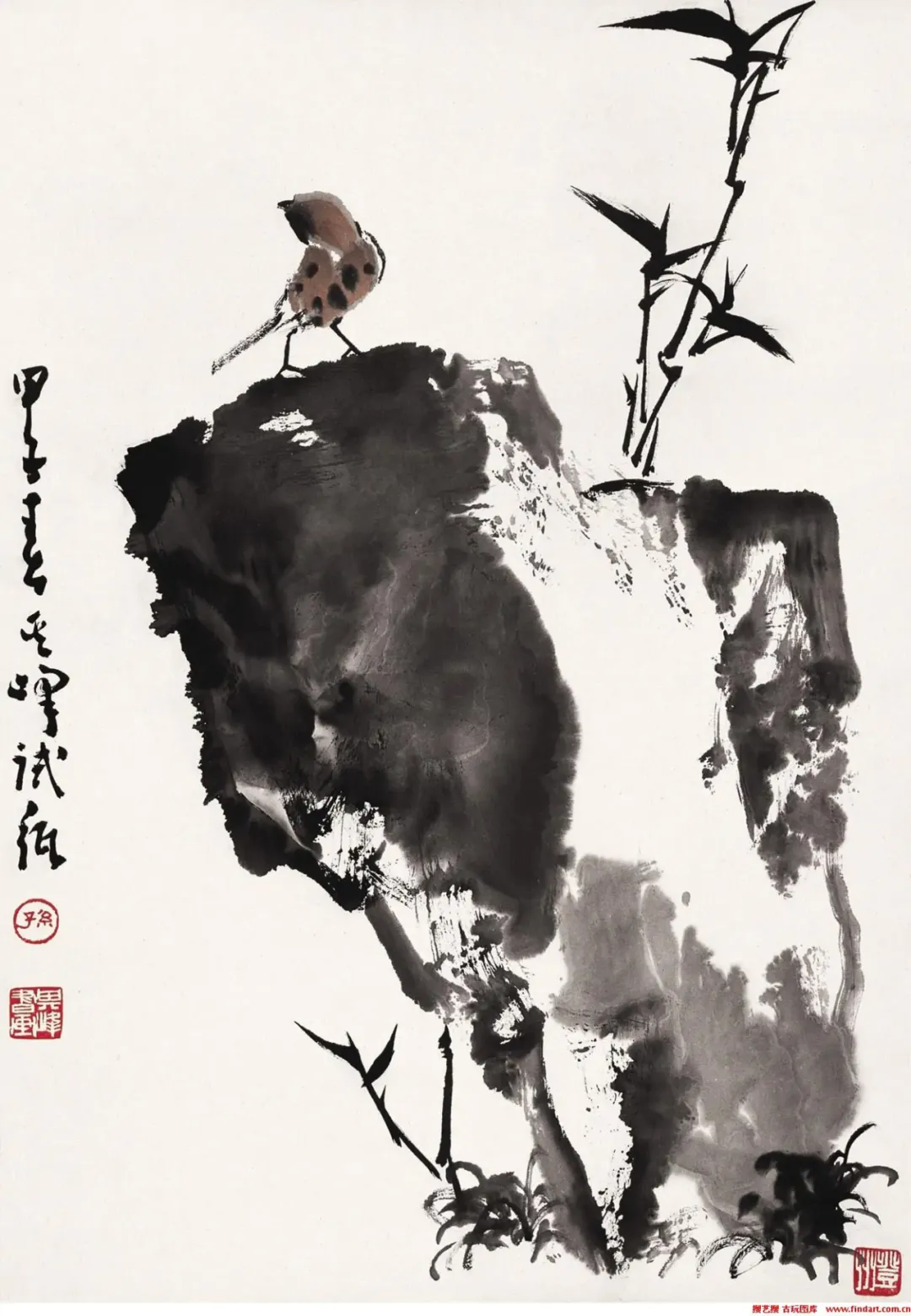

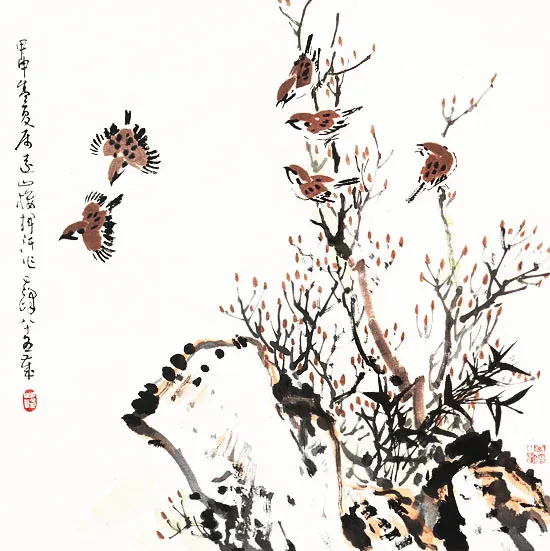

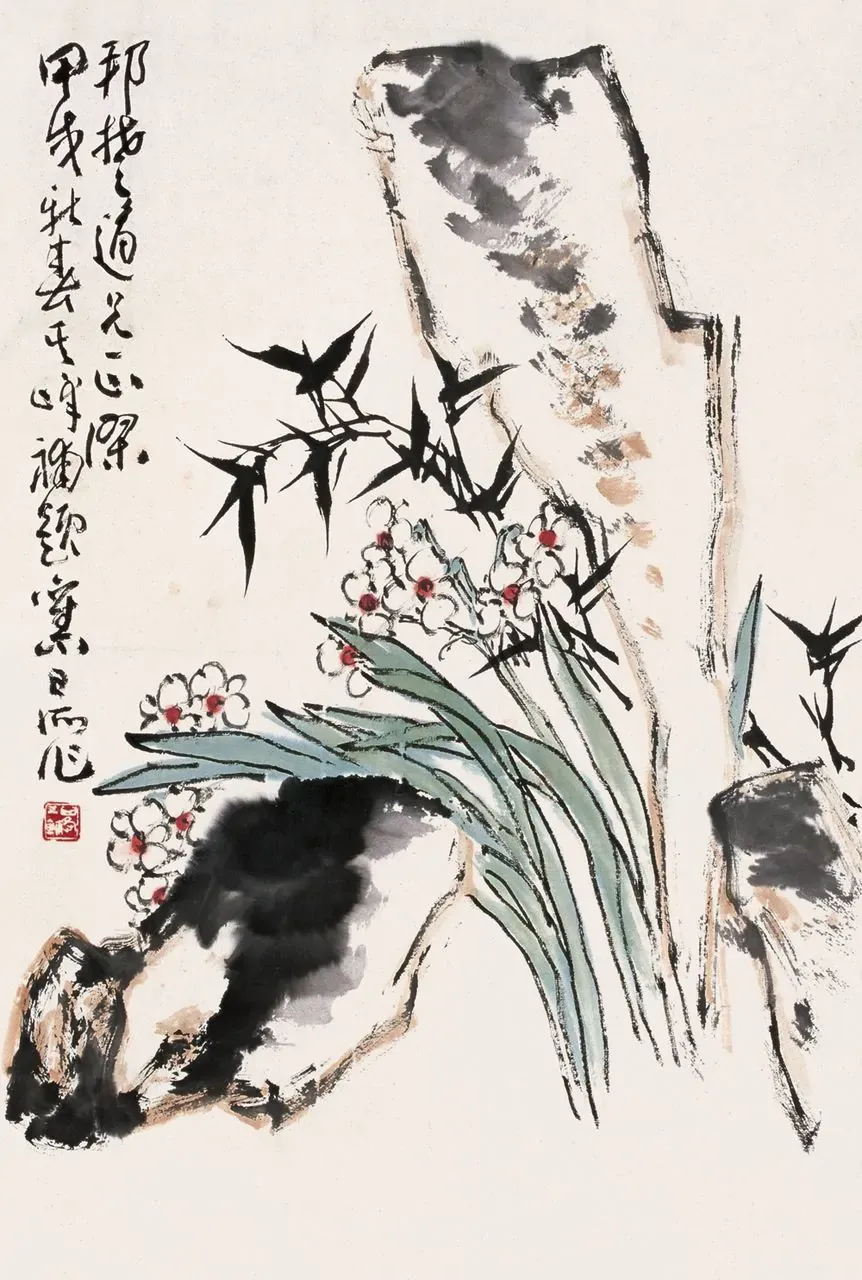

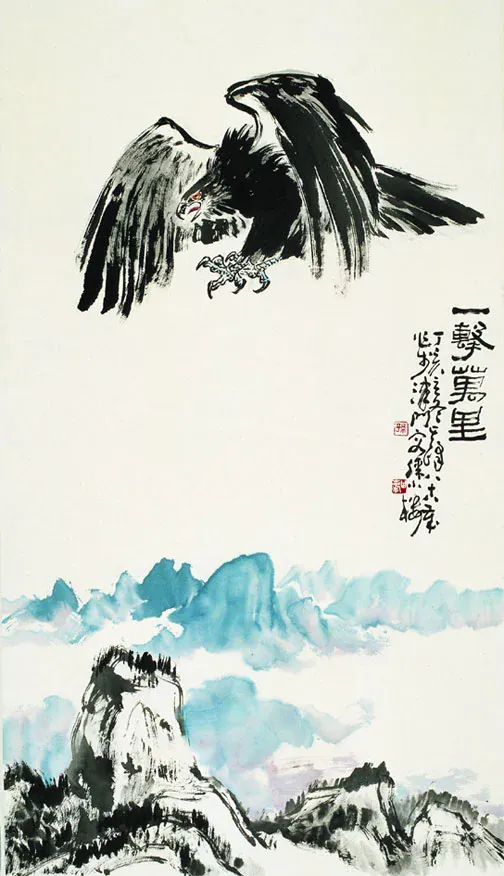
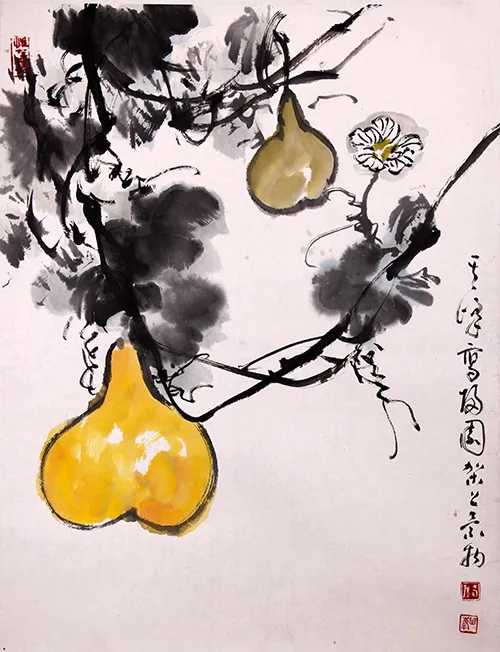
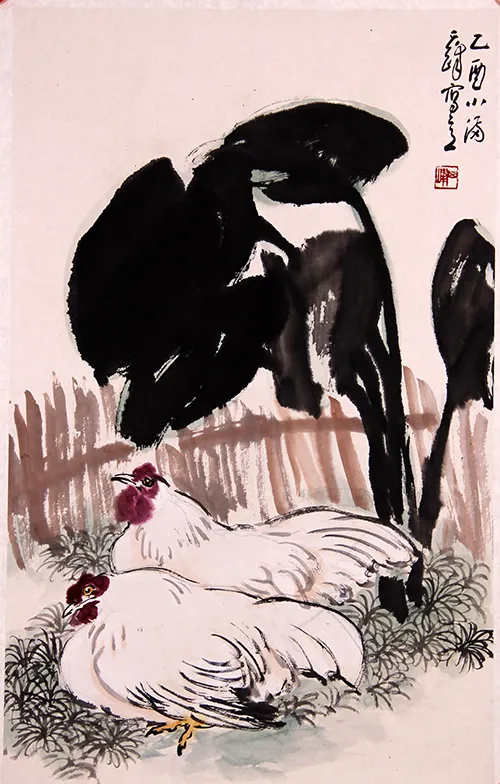
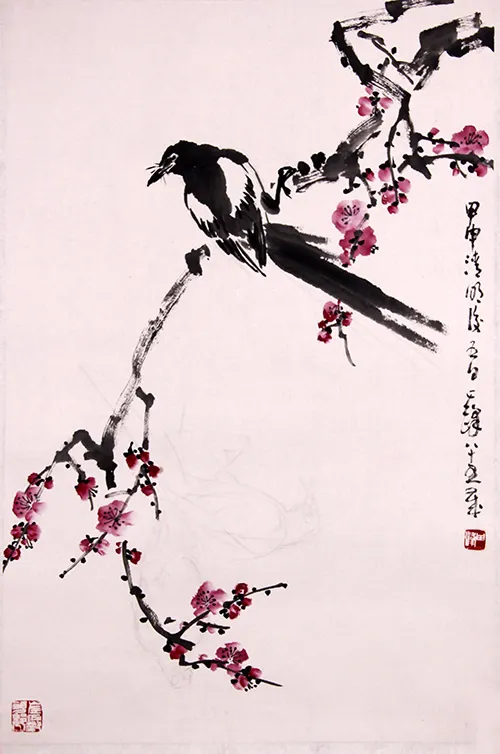

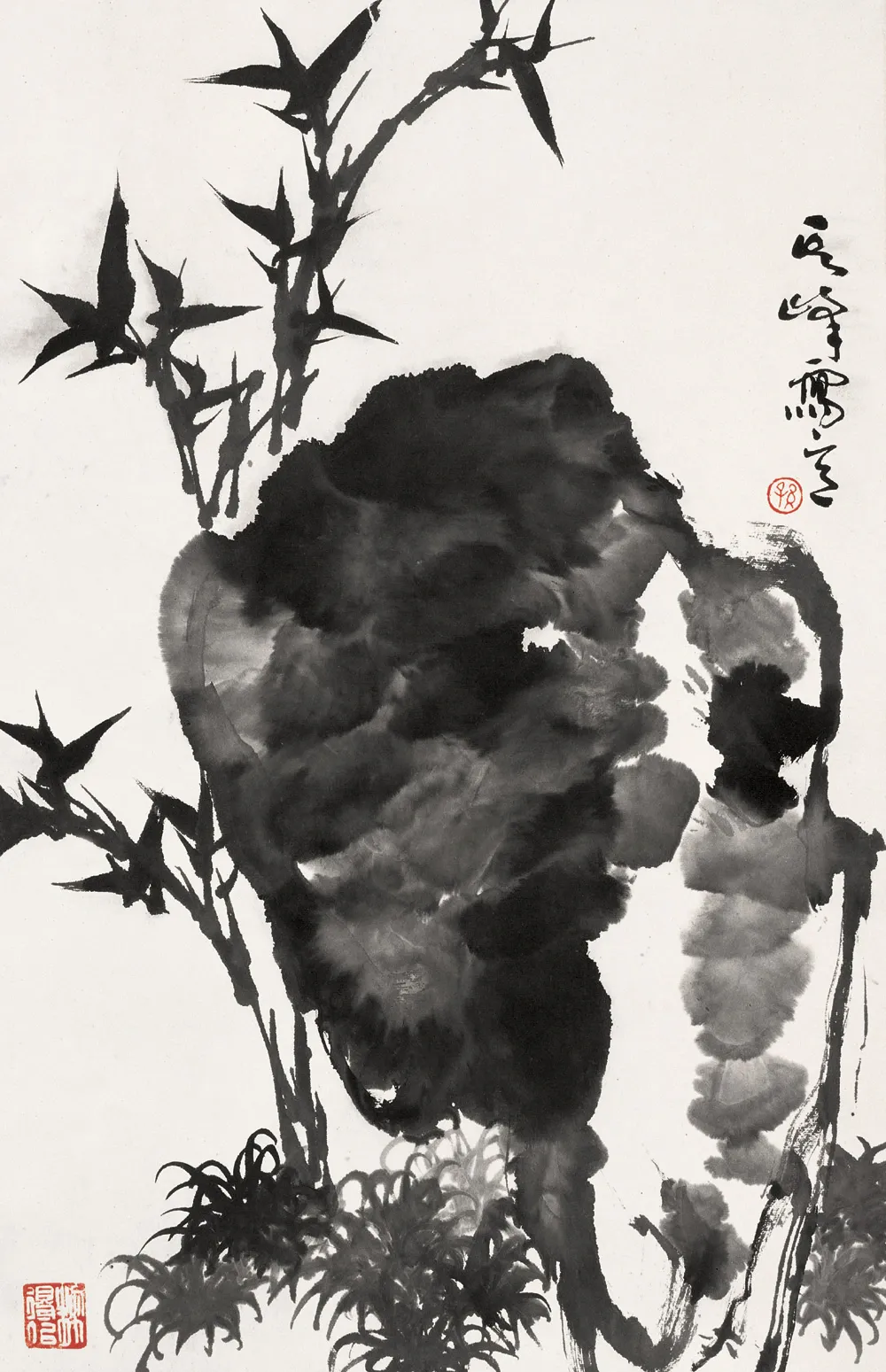

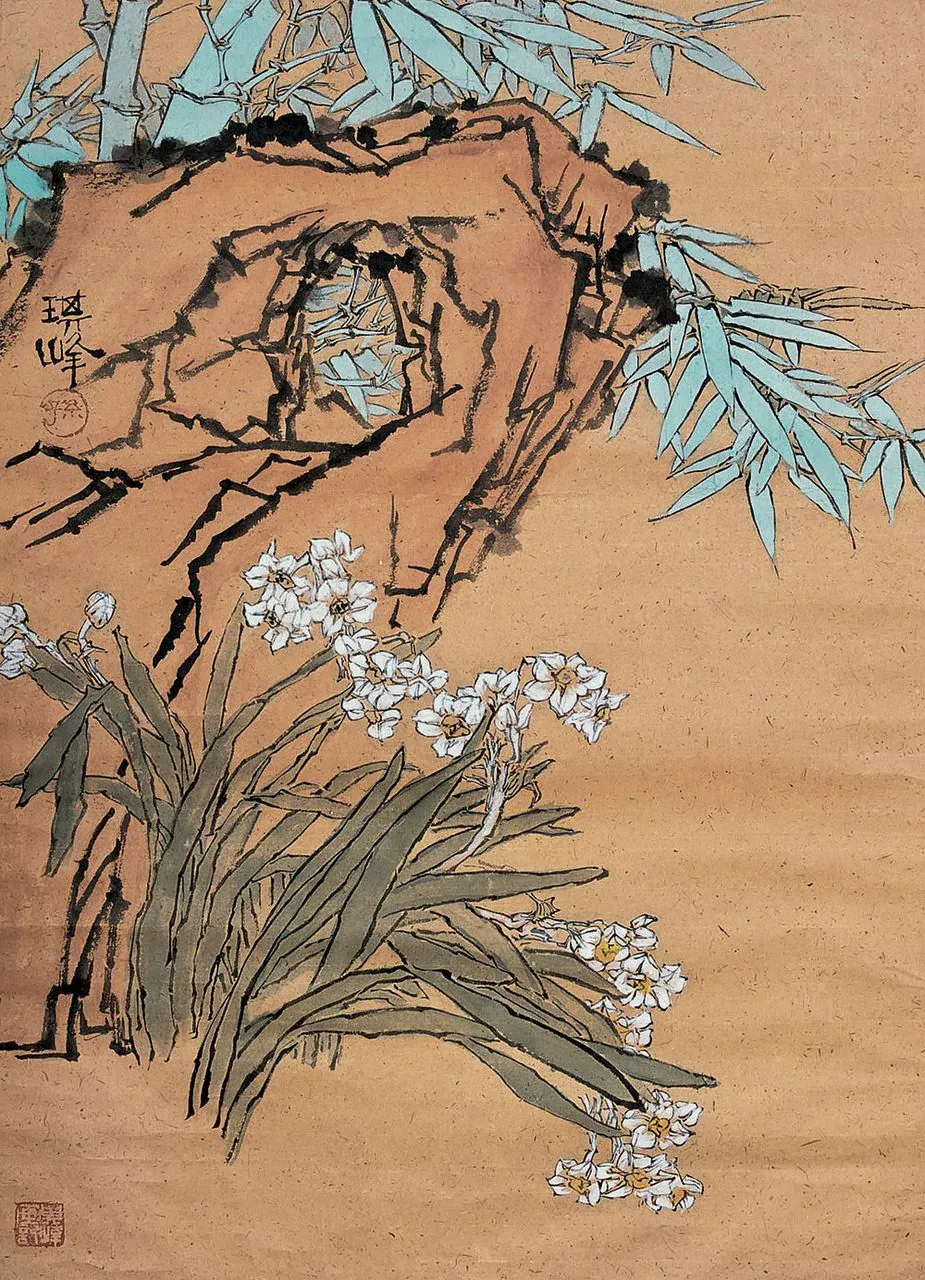
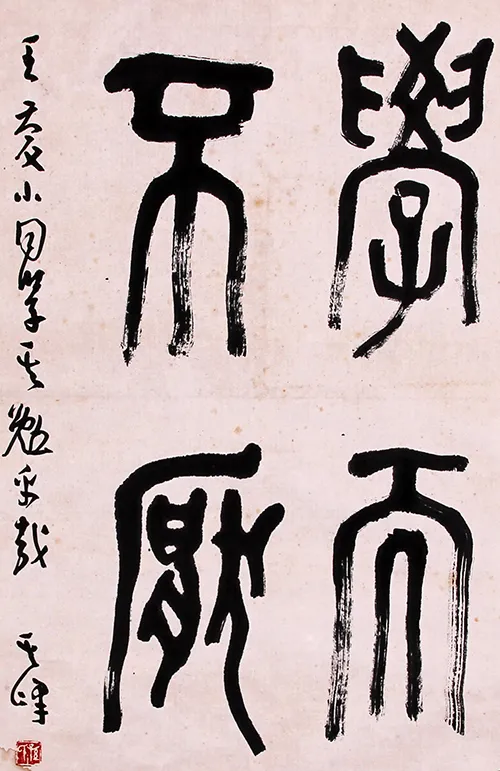
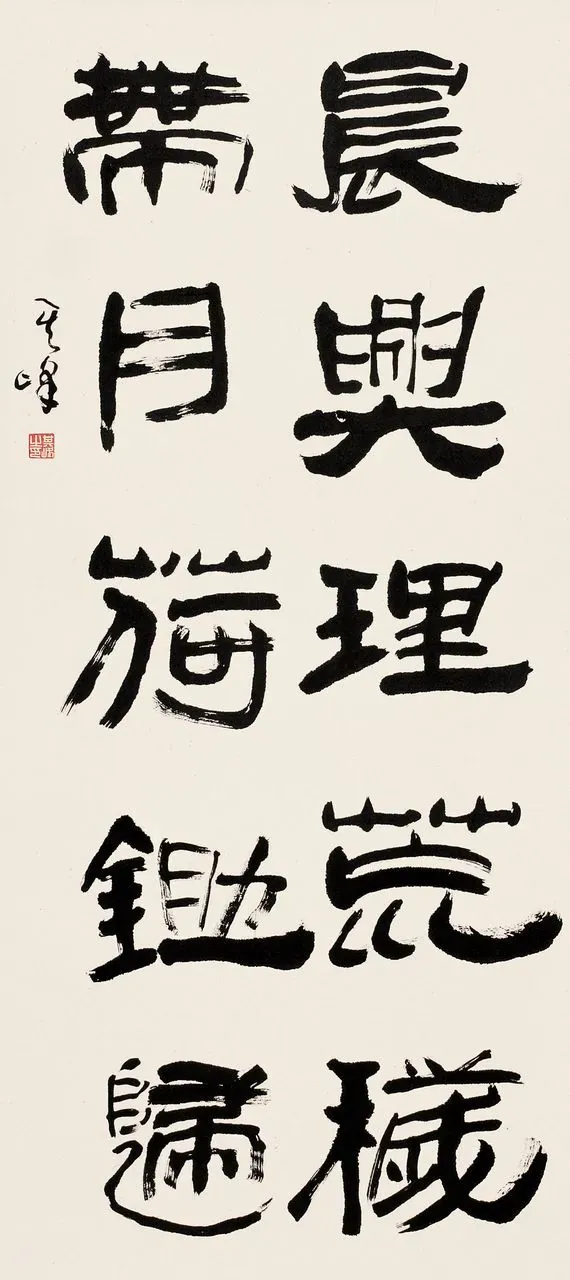
孙其峰篆刻兼研篆书,篆书虽尽文字之职,然其艺术魅力历久弥新,自秦至清,多循李斯、李阳冰小篆,难逾其门。明清书家求工整,致篆书僵化渐衰。孙氏曰:“甲骨、金文至小篆、李阳冰,由不规矩至规矩,清之邓石如、赵之谦、何绍基,及近代金息候,又由规矩至不规矩,物极必反,理固然也。”孙氏篆书摒弃中规入矩,求写意,法金文、甲骨、秦诏版权量、古陶、汉碑额、瓦当文,兼得邓石如启迪,故篆书古朴雄浑,笔酣墨活,扫板滞无灵之弊。
Sun Qifeng also studied seal script while engaging in seal carving. Although seal script had fulfilled its role as a written form, its artistic allure persisted through the ages. From the Qin to the Qing Dynasties, many followed the small seal script styles of Li Si and Li Yangbing, finding it difficult to surpass them. Ming and Qing calligraphers pursued neatness and uniformity, leading to the stagnation and decline of seal script. Sun stated, "From oracle bones and bronze inscriptions to small seal script and Li Yangbing, the transition went from irregular to regular. In the Qing Dynasty, Deng Shiru, Zhao Zhiqian, He Shaoji, and in modern times Jin Xihou, transitioned back from regular to irregular. This proves the principle that 'extremes meet'." Sun abandoned rigid conventions in his seal script, seeking expressive freedom. He drew from bronze inscriptions, oracle bones, Qin edicts, ancient pottery, Han dynasty stele titles, and tile inscriptions, inspired by Deng Shiru. Thus, his seal script was ancient, bold, and vigorous, with lively brushwork, avoiding the rigidity of previous practitioners.
孙其峰篆刻,受教于寿石工、金禹民,寝馈战国古鉥、秦汉印章,兼取皖派。虽篆刻不如书画用力多,间或有断,然如其言“动刀不多,用脑不少”,篆刻艺术始终不忘。其篆刻不囿师承,不落窠臼,力求自成一家,植根古鉥,不止于酷肖、乱真。曰:“常探周秦不规则章法,体会花鸟构图原理。画与印微观有别,宏观通一。”喜用汉简、《爨宝子碑》、魏碑字体,古趣盎然。其肖形印,造型生动,绘画学养渗透其中,卓尔不凡。治印严肃,每印反复构思,稿多至数十,甚至百次,不满意不奏刀。曾设计多印稿,未治成印者亦多。曰:“喜一方印文写多遍,寻最佳章法,亦在寻己。”七十后,书画所钤皆自刻,书画印相得益彰。
Sun Qifeng studied seal carving under Shou Shigong and Jin Yumin, immersing himself in ancient Warring States carvings and Qin and Han dynasty seals, and also drawing from the Anhui school. Although his dedication to seal carving was not as intense as his work in painting and calligraphy, and he sometimes paused, he never forgot the art of seal carving, saying, "I may not carve often, but I think about it a lot." His seal carvings did not conform to traditional teachings or fall into conventional patterns, striving to establish his own style. Rooted in ancient carvings, his work transcended mere imitation. He stated, "I often explore irregular and varied Zhou and Qin styles to understand the compositional principles of flower and bird paintings. In my view, painting and seal carving differ in detail but are consistent in their overall approach." He favored the fonts of Han bamboo slips, the "Stele of Cuan Baozi," and Wei steles, with a fondness for ancient charm. His pictorial seals were vivid, reflecting his painting background and standing out uniquely. He approached seal carving with seriousness, repeatedly conceptualizing each seal, often creating dozens or even hundreds of drafts, never carving until satisfied. He designed many seal drafts, though not all were carved. He remarked, "I enjoy writing seal inscriptions many times to find the best composition and to discover myself." After seventy, all the seals on his paintings and calligraphy were self-carved, harmonizing the art forms.
孙其峰艺术实践,启示后辈:以继承传统为己任,于传统延续中求自我发展。其书法成就示人:唯淡名利,甘寂寞,勤奋耕耘,方结硕果。
癸卯二月(2023年3月20日),孙其峰与世长辞
Sun Qifeng's artistic practice offers insights for future generations: to take the inheritance of excellent traditions as one's duty and to seek self-development within the continuation of tradition. His achievements in calligraphy demonstrate that only by disregarding fame and fortune, embracing solitude, and diligently cultivating one's craft can one achieve fruitful results.
In the second month of the Gui Mao year (2023), Sun Qifeng passed away.
责任编辑:苗君